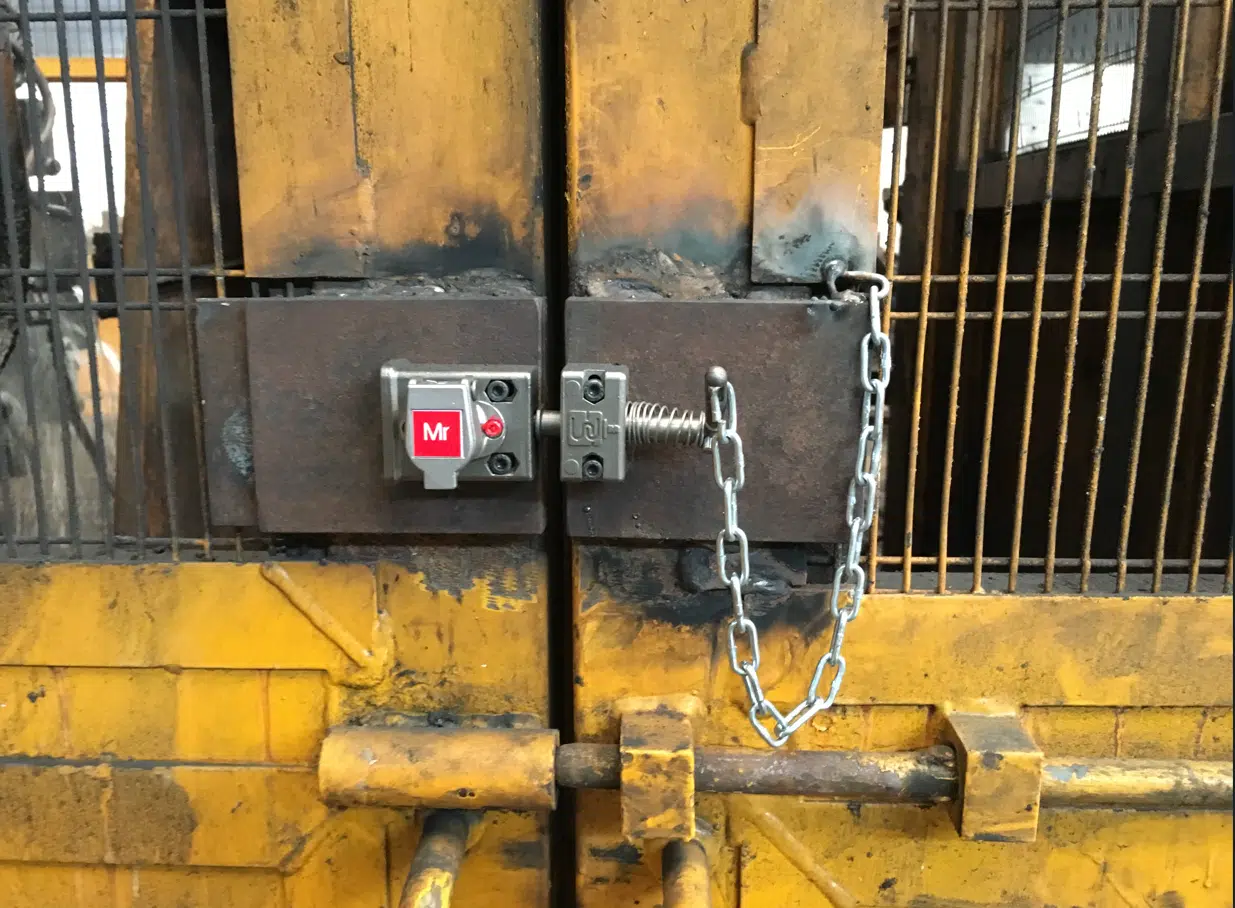Last edit: 09/10/2024

Interlocking devices shall be installed in a suitable robust manner and in accordance with the instructions provided by the manufacturer.
The Standard provides arrangement and fastening requirements both for position swithces and actuators.
With the introduction of the Trapped Keys, a whole new set of definitions were added, among which the term “Access Lock”
[EN ISO 14119:2024] 3 Terms and definitions
3.19.8 Access lock. Device intended to lock a guard in the closed position for trapped key interlocking systems, and linked to the control system via the key transfer.
EXAMPLE: Access locks can also be used for locking in position of objects other than guards, e.g., isolators, valves or barriers.
An example of an Access Lock is in the picture.
6.2 Some requirements for position switches, bolt locks and access locks:
- Fasteners shall be reliable and loosening them shall require a tool;
- Type 1 position switches shall have provisions for permanently fixing the location after adjustement;
- The position switch shall be located and, if necessary, protected so that damage from foreseeable external causes is avoided;
- A position switch shall not be used as mechanical stop, unless this is the intended use of the position switch as declared by manufacturer.
6.3 Some requirements for actuators are:
- Fasteners of the actuators shall be reliable and loosening them shall require a tool;
- The actuator shall be located and, if necessary, protected so that failure from foreseeable external causes is avoided;
- An actuator shall not be used as mechanical stop, unless this is the intended use of the position switch as declared by manufacturer;
- The support and fastening for the actuators shall be sufficiently rigid to maintain correct operation of the actuator.
The Standard also provides explanations regarding the attuation modalities of the interlock (direct or indirect) [5.4], the interface with the control system [5.5], the impact energy for mechanical stops [5.6] and the additional requirements to be followed if the locking generates hazards and if the device is used for the protection of people.
6.6 Additional requirements deal with:
- Mechanical and Electromagnetic guard locking devices
- Holding force;
- Supplementary release of guard locking (escape, emergency, auxiliary);
- Fastenings.